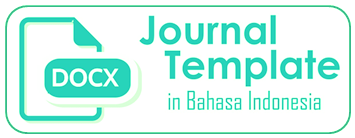Behind The Scenes Implementation of Islamic Law and Positive Law in Re-sponding To 'Sound Horeg' In Indonesia
DOI:
https://doi.org/10.35335/legal.v14i3.1390Keywords:
Regulation, Positive Law , Islamic LawAbstract
This study analyzes the implementation of Islamic law and positive law in responding to contemporary social problems, particularly regarding the proper use of sound horeg in society. The method used is empirical juridical, with the first discussion topic being the problematic of sound horeg in Indonesia, the second being the legal approach to violations of sound horeg in society, and the controversy of sound horeg as a culture in Muslim society. Primary data was obtained through interviews and direct observation, while secondary data came from laws and regulations, Islamic legal literature, journals, books, and positive legal doctrine. The results of the study indicate that there is synchronization and conflict between Islamic legal norms and positive law in terms of regulations in terms of the substance of the law, however, law enforcement against the use of sound horeg has not been running optimally, which is influenced by cultural and social factors of society. This study provides recommendations so that the integration of both can be carried out harmoniously for the sake of creating social order and protecting people's rights without ignoring religious values ??and individual interests. By providing recommendations for research that changes to the offense in Article 503 of the Criminal Code must be made. The empirical juridical approach has proven effective in understanding the complexity of law application in a dynamic social context
Downloads
References
Adhim, A. (2025). Sound Horeg in the Scales of Sharia: An Analysis of Fiqh and Social Society. Journal of Islamic Family Law, 8(1), 26–32.
Al-Fatih, S. (2023). Development of Legal Research Methods in Indonesia. UMM Press.
Al Kautsar, I., & Muhammad, D. W. (2022). Lawrance M. Friedman's Modern Legal System: Legal Culture and the Social Change of Society from Industrial to Digital. Sapientia et virtus, 7(2), 84–99. https://doi.org/10.37477/sev.v7i2.358
Ardina, R. E., Maharani, D. P., & Yuliamanda, F. P. (2024). The Impact of Globalization on the Local Cultural Values of the Rural People of Ambulu Jember. Journal of Motivation Education and Language, 2(2), 171–181. https://doi.org/10.59581/jmpb-widyakarya.v2i2.3457
NewsOne. (2025). East Java MUI: Sound Horeg Causes More Harm than Benefits. https://www.youtube.com/watch?v=C0DQfROCzqU
Biputra, A. (2024). Research Report on Exploring Horeg Sound Uploaded by Andrian Biputra. Scribd.Com. https://www.scribd.com/document/859419743/LAPORAN-PENELITIAN-MENGULIK-SOUND-HOREG
Chae, H. C. (2025). How will individual streaming platforms disrupt the entertainment and retail industries? Insights from Mukbang phenomenon. Digital Transformation and Society, 4(2), 196–211. https://doi.org/10.1108/DTS-07-2024-0117
Dukcapil of the Ministry of Home Affairs. (2024). Release of Indonesia's Net Population Data | Semester I 2024. www.youtube.com/watch?v=iWbmW0pAJiA&t=4813s
Dwi, A. (2025). A Verbal Argument between Residents and Police in Kediri During the Dissolution of Sound Horeg. Detik.Com. https://www.detik.com/jatim/berita/d-8020807/adu-mulut-warga-dan-polisi-di-kediri-saat-pembubaran-sound-horeg#google_vignette
Humaida, A., Fasicha, I. D., Alghifari, M. R., & Lestari, P. S. (2024). The Potential of the Halal Industry in Indonesia as the Largest Muslim Population Country. Journal of Islamic Economics, 6(1), 11–24.
Ishak, N. (2022). Religious Tolerance in the Constitution and Guarantees for the Protection of Human Rights. Jurnal Scientia Indonesia, 8(1), 53–70. https://doi.org/10.15294/jsi.v8i1.35953
Islamy, A. (2021). The Philosophical Foundations and Patterns of Abdurrahman Wahid's Approach to the Implementation of Islamic Law in Indonesia. Journal of Islamic Law and Politics, 6(1), 51–73. https://doi.org/10.35673/ajmpi.v6i1.1245
Jenkins, H., Ford, S., & Green, J. (2013). Spreadable Media: Creating Value and Meaning in a Networked Culture. In Spreadable Media. https://doi.org/10.18574/nyu/9780814743515.001.0001
Lesgasevia, S. Della. (2024). Legal Analysis of the Use of Sound Systems that Exceed the Limit (Sound Horeg) (Case Study of the Jurisdiction of Karangploso District) (Issue 1). University of Muhammadiyah Malang.
Mashlahah, I., & Arifin, S. (2023). The impact of technological developments on the behavior and life of young people in the millennial era. Journal of Community Service and Science Application, 4(2), 9–13. https://doi.org/10.25299/jpmpip.2023.13167
Muasmara, R., & Ajmain, N. (2020). Acculturation of Islam and Culture of the Archipelago. Journal of Education and Teaching, 1(2), 111–125. https://doi.org/10.35961/tanjak.v1i2.150
Nugrahani. (2003). Local Culture. Build Scripts.
Nurainun, Harahap, N. F., Regar, N. A., Pranata, D. A., Purba, N. N., & Hadiningrum, S. (2017). The Position of Islamic Law in the Indonesian Legal System. Indonesian Journal of Islamic Jurisprudence, Economic and Legal Theory, 2(4), 2146–2154.
Rahmatin, L. S. (2023). Analysis of Local Cultural Potential as a Tourist Attraction in Segunung Hamlet. Journal of Tourism Studies and Applications, 3(2), 30–40. https://doi.org/10.53356/diparojs.v3i2.79
Ridwan, A. R., Hd, S., Ningsih, S. W., & Saribun Saribun. (2024). Sources of Islamic Teachings. Journal of Islamic Education Research, 2(1), 130–142. https://doi.org/10.61132/karakter.v2i1.393
Ridwan, M., Umar, M. H., & Ghafar, A. (2021). Sources of Islamic Law and Its Implementation. Journal of Islamic Studies, 1(2), 28–41. https://doi.org/10.37567/borneo.v1i2.404
Riyando, M. T. (2024). Citizenship and Identity: Respecting Diversity in Unity. Multidisciplinary Journal of Academic Sciences, 1(3), 537–542. https://doi.org/10.61722/jmia.v1i3.1563
Saroinsong, M. E. S. (2025). Law enforcement against motorcycle vehicles that use modified exhausts in the Manado City area. Lex Privatum, 14(5).
Sinambela, S. M., Saragih, M. D., & Lumbantobing, J. N. Y. (2025). Cultural Dynamics and Social Change in Modern Society. Education Catalyst, 2(2), 65–75. https://doi.org/10.62383/katalis.v2i2.1521
Soesilo, R. (1991). The Criminal Code (KUHP) and its comments are complete article by article. Politeia.
Sultan, B. (2023). The Contributions of Islamic and Institutions To Modern Indonesian. Pagaruyuang Law Journal, 7(1), 207–221. https://doi.org/10.31869/plj.v7i1.4567
Thomas, M. H. (2025). Sound Horeg Makes a Noise to the Extent of Haram Fatwa, This Says the Central MUI. Liputan6.Com. https://www.liputan6.com/islami/read/6100866/sound-horeg-bikin-gaduh-hingga-difatwa-haram-ini-kata-mui-pusat?page=3
Constitution of the Republic of Indonesia. (1945). Constitution of the Republic of Indonesia in 1945.
Widiana, I. W. A., Umboh, K. Y., & Taroreh, H. (2023). Delik causes noise at night or near places of worship and courts according to article 503 of the Criminal Code as a delinquency violation. Lex Administratum, 11(2).
Yashilva, W. (2025). Indonesia Ranks Second with the Largest Muslim Population in the World. Goodstats.Id. https://data.goodstats.id/statistic/indonesia-menduduki-peringkat-kedua-dengan-populasi-muslim-terbanyak-di-dunia-HP1S0
Downloads
Published
How to Cite
Issue
Section
License
Copyright (c) 2025 LEGAL BRIEF

This work is licensed under a Creative Commons Attribution-NonCommercial 4.0 International License.





